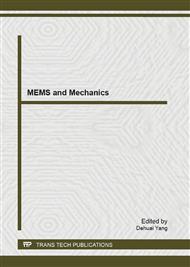[1]
S. Calle, L. Klaba, D. Thomas, L. Perrin, O, Dufaud Influence of the size distribution and concentration on wood dust explosion: Experiments and reaction modeling, Powder Technology 157 (2005) 144 – 148
DOI: 10.1016/j.powtec.2005.05.021
Google Scholar
[2]
K.L. Cashdollar, I. Liebman, R.S. Conti, Three bureau of mines optical dust probe, Report of Investigations 8542, US Bureau of Mines, US Department of Interior, Washington, 1981.
Google Scholar
[3]
R.S. Conti, K.L. Cashdollar, I. Liebman, Improved optical probe for monitoring dust explosions, Review of Scientific Instruments 53 (1982)311-313
DOI: 10.1063/1.1136969
Google Scholar
[4]
R. Pilao, E. Ramalho, C. Pinho, Overall characterization of cork dust explosion, Journal of Hazardous Materials 133 (2006) 183–195
DOI: 10.1016/j.jhazmat.2005.10.015
Google Scholar
[5]
O. Kalejaiye, P.R. Amyotte, M.J. Pegg, K.L. Cashdollar, Effectiveness of dust dispersion in the 20-L Siwek chamber, Journal of Loss Prevention in the Process Industries 23(2010)46–59
DOI: 10.1016/j.jlp.2009.05.008
Google Scholar
[6]
K.L. Cashdollar, Overview of dust explosibility characteristics, Journal of Loss Prevention in the Process Industries 13 (2000)183–199
DOI: 10.1016/s0950-4230(99)00039-x
Google Scholar
[7]
K.L. Cashdollar, K. Chatrathi, Minimum explosible dust concentrations measured in 20-L and 1-m3 chambers. Combustion Science and Technology 87(1992)157–171
DOI: 10.1080/00102209208947213
Google Scholar
[8]
K.L. Cashdollar, M. Hertzberg, 20-L explosibility test chamber for dusts and gases. Review of Scientific Instruments 56(1985)596–602.
DOI: 10.1063/1.1138295
Google Scholar
[9]
K.L. Cashdollar, M. Hertzberg, G. M. Green, Hazards of explosives dusts: Particle size effects, Pittsburgh Research Center Internal Report 49(1992)48
DOI: 10.2172/6721574
Google Scholar
[10]
A. Garcia-Agreda, A. Di Benedetto, P. Russo, E. Salzano, R. Sanchirico, The role of ignition delay time on the deflagration index in a 20L bomb, Sixth Fire and Explosion Hazards Seminar (FEH6) (2010)11–16, University of Leeds
Google Scholar


